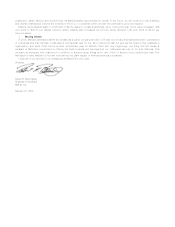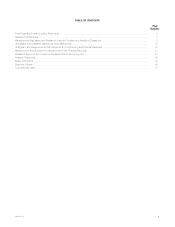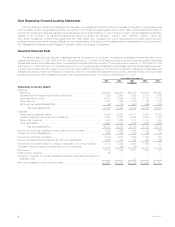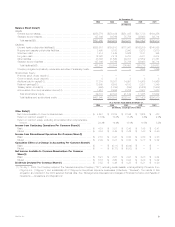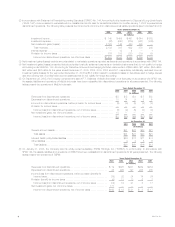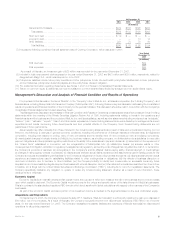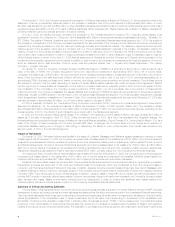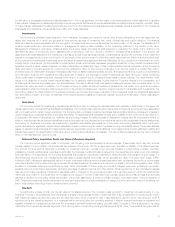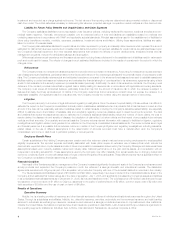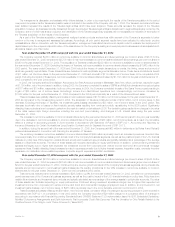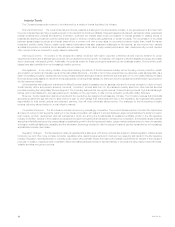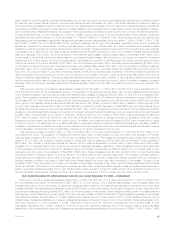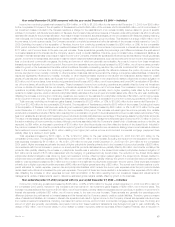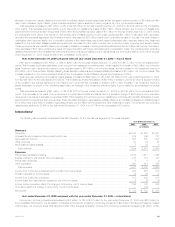MetLife 2005 Annual Report Download - page 13
Download and view the complete annual report
Please find page 13 of the 2005 MetLife annual report below. You can navigate through the pages in the report by either clicking on the pages listed below, or by using the keyword search tool below to find specific information within the annual report.Industry Trends
The Company’s segments continue to be influenced by a variety of trends that affect the industry.
Financial Environment. The current financial environment presents a challenge for the life insurance industry. A low general level of short-term and
long-term interest rates can have a negative impact on the demand for and the profitability of spread-based products such as fixed annuities, guaranteed
interest contracts and universal life insurance. In addition, continued low interest rates could put pressure on interest spreads on existing blocks of
business as declining investment portfolio yields draw closer to minimum crediting rate guarantees on certain products. The compression of the yields
between spread-based products and interest rates will be a concern until new money rates on corporate bonds are higher than overall life insurer
investment portfolio yields. Recent volatile equity market performance has also presented challenges for life insurers, as fee revenue from variable
annuities and pension products is tied to separate account balances, which reflect equity market performance. Also, variable annuity product demand
often mirrors consumer demand for equity market investments.
Improving Economy. A recovery in the employment market combined with higher corporate confidence should improve demand for group
insurance and retirement & savings-type products. Group insurance premium growth, for example, with respect to life and disability products, are closely
tied to employers’ total payroll growth. Additionally, the potential market for these products is expanded by new business creation. Bond portfolio credit
losses have also benefited from an increasingly healthy economy.
Demographics. In the coming decade, a key driver shaping the actions of the life insurance industry will be the rising income protection, wealth
accumulation, protection and transfer needs of the retiring Baby Boomers — the first of whom have entered their pre-retirement, peak savings years. As a
result of increasing longevity, retirees will need to accumulate sufficient savings to finance retirements that may span 30 or more years. Helping the Baby
Boomers accumulate assets for retirement and subsequently converting these assets into retirement income represents a transformative opportunity for
the life insurance industry.
Life insurers are well positioned to address the Baby Boomers’ rapidly increasing need for savings tools and for income protection. In light of recent
Social Security reform and pension solvency concerns, ‘‘protection’’ is what sets the U.S. life insurance industry apart from other financial services
providers pursuing the retiring Baby Boomer segment. The Company believes that, among life insurers, those with strong brands, high financial strength
ratings, and broad distribution, are best positioned to capitalize on the opportunity to offer income protection products to Baby Boomers.
Moreover, the life insurance industry’s products and the needs they are designed to address are complex. The Company believes that individuals
approaching retirement age will need to seek advice to plan for and manage their retirements and that, in the workplace, as employees take greater
responsibility for their benefit options and retirement planning, they will need individually tailored advice. The challenge for the life insurance industry
remains delivering tailored advice in a cost effective manner.
Competitive Pressures. The life insurance industry is becoming increasingly competitive. The product development and product life-cycles have
shortened in many product segments, leading to more intense competition with respect to product features. Larger companies have the ability to invest in
brand equity, product development and risk management, which are among the fundamentals for sustained profitable growth in the life insurance
industry. In addition, several of the industry’s products can be quite homogeneous and subject to intense price competition, and sufficient scale, financial
strength and flexibility are becoming prerequisites for sustainable growth in the life insurance industry. Larger market participants tend to have the capacity
to invest in additional distribution capability and the information technology needed to offer the superior customer service demanded by an increasingly
sophisticated industry client base.
Regulatory Changes. The life insurance industry is regulated at the state level, with some products also subject to federal regulation. As life insurers
introduce new and often more complex products, regulators refine capital requirements and introduce new reserving standards for the life insurance
industry. Regulation recently adopted or currently under review can potentially impact the reserve and capital requirements for several of the industry’s
products. In addition, regulators have undertaken market and sales practices reviews of several markets or products including equity-indexed annuities,
variable annuities and group products.
MetLife, Inc.
10


